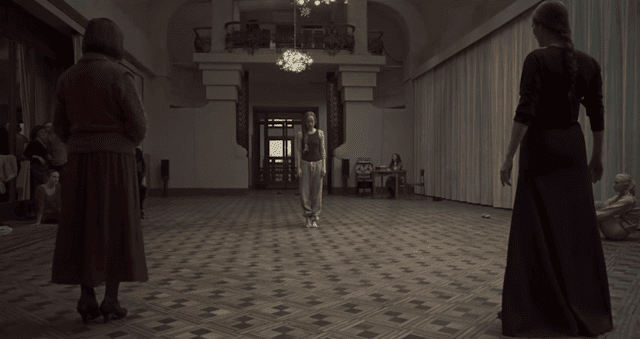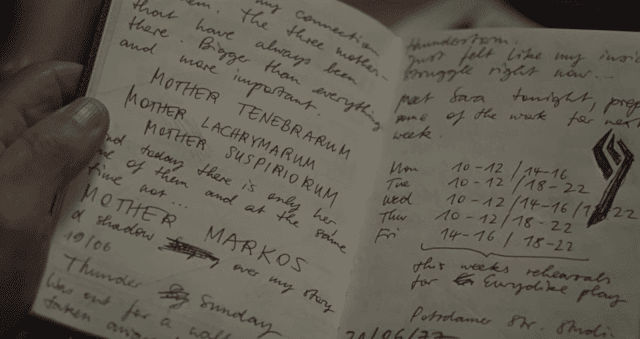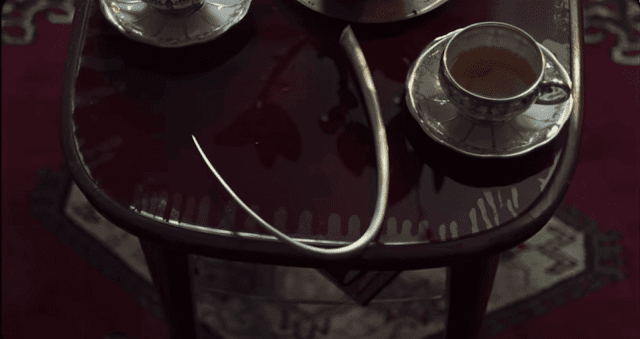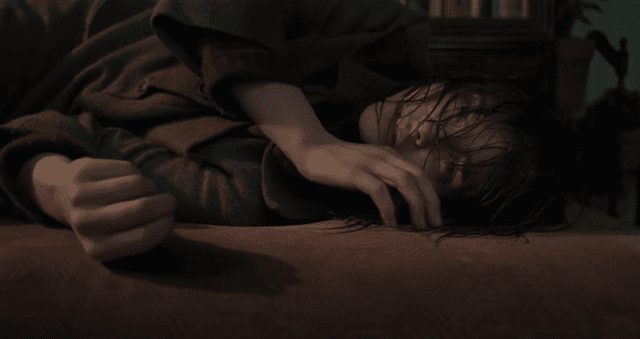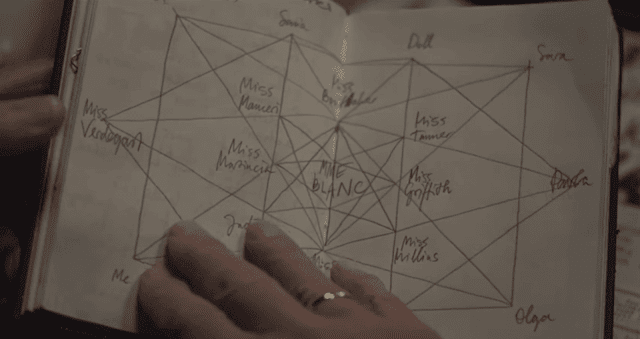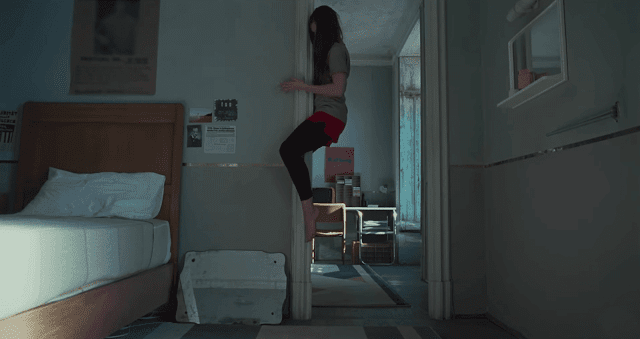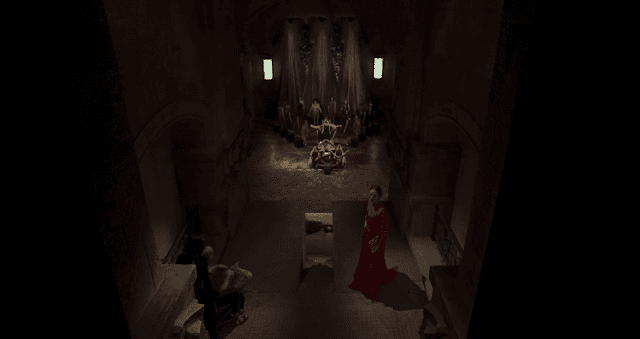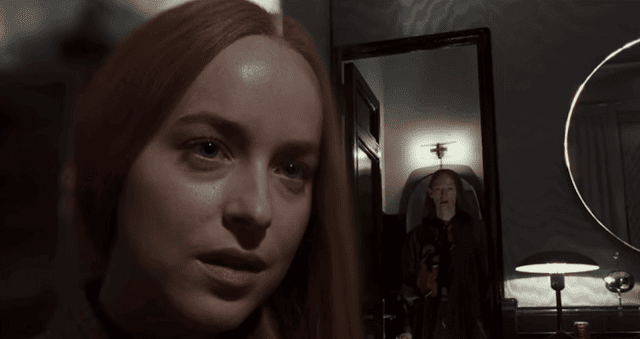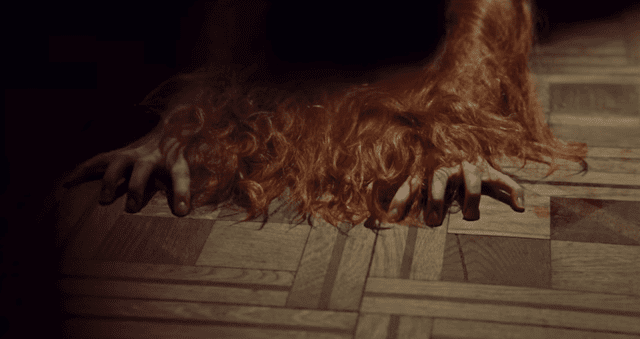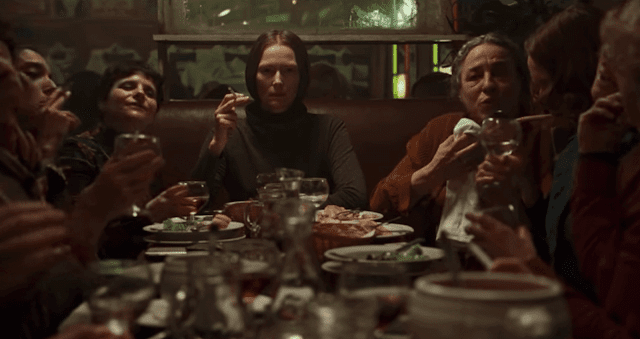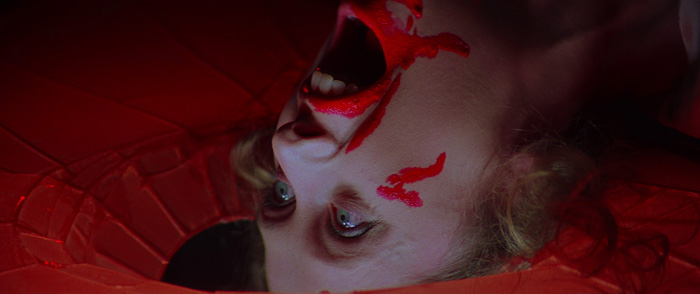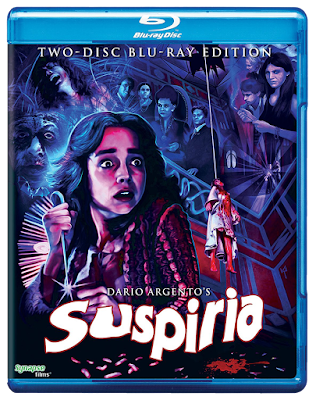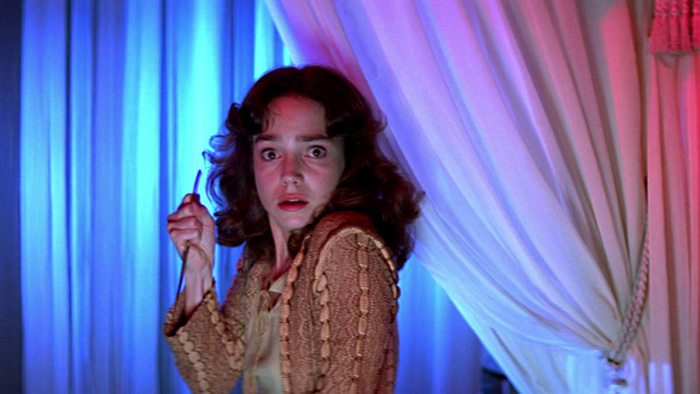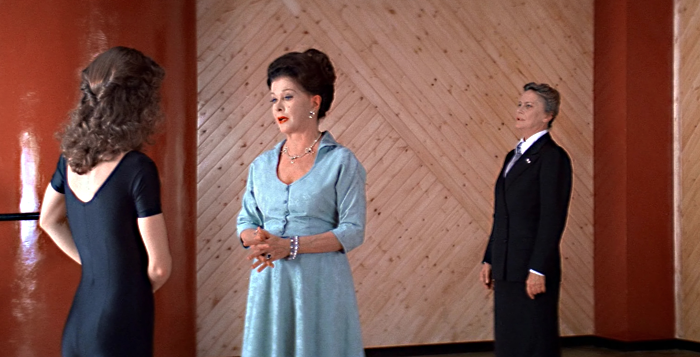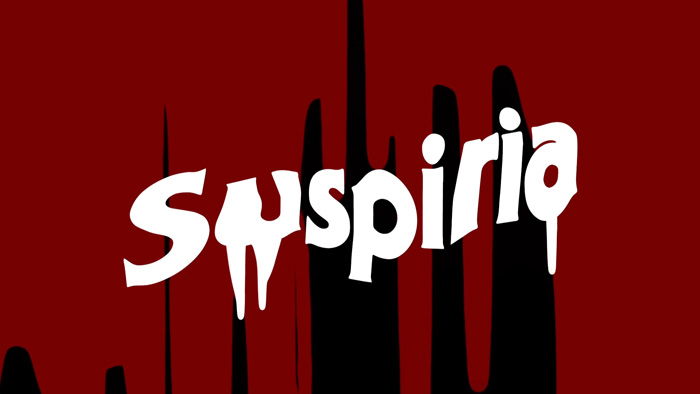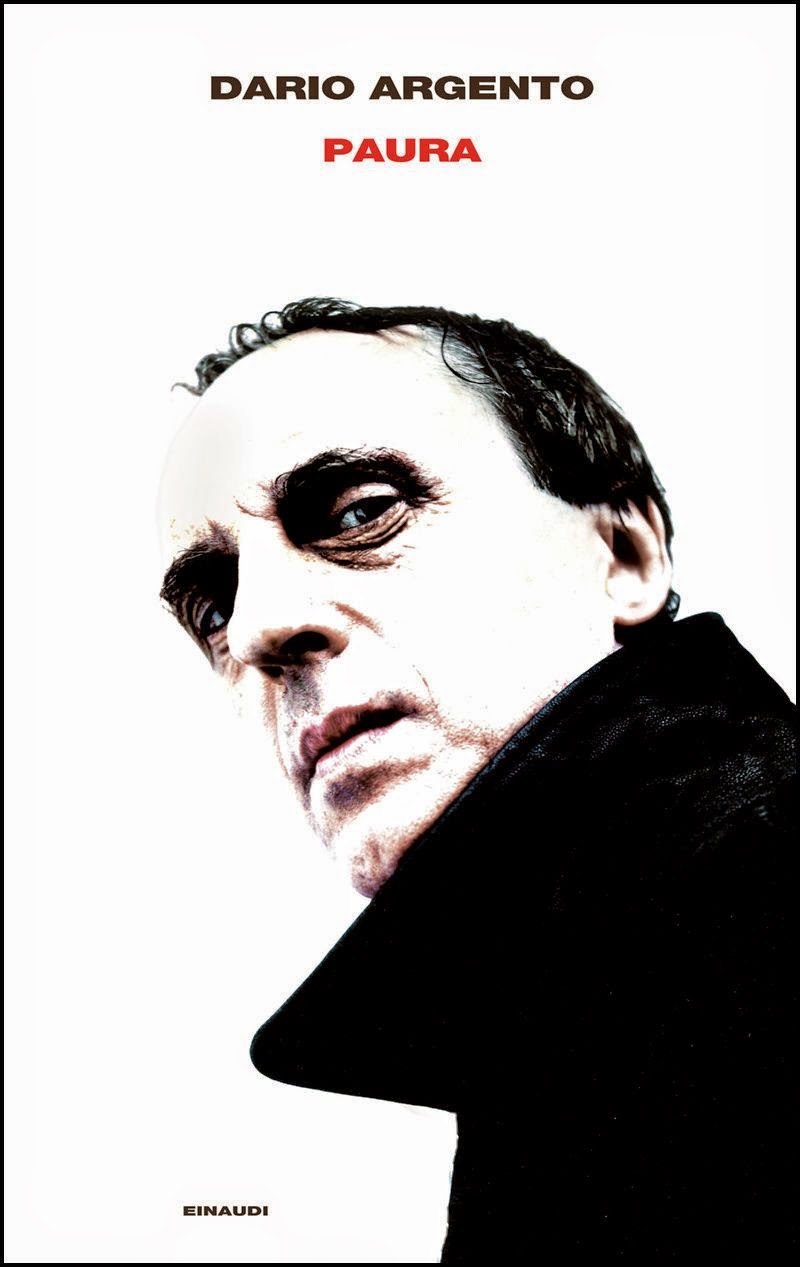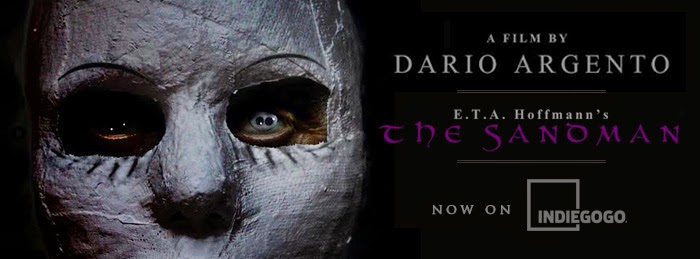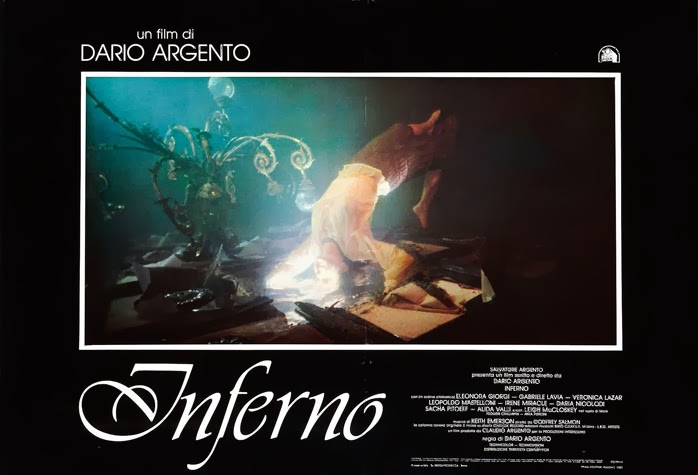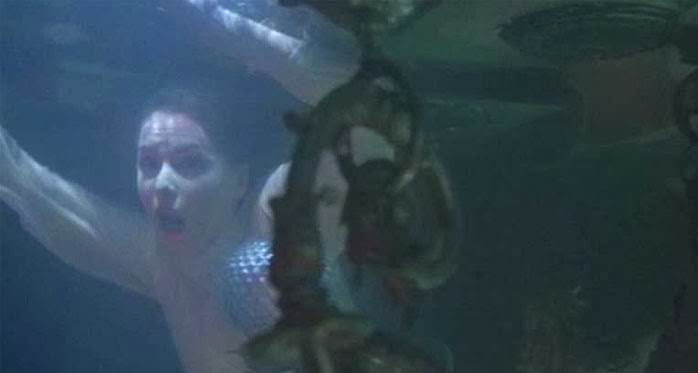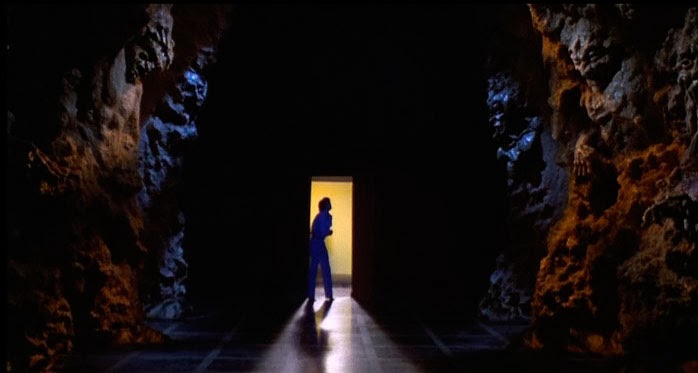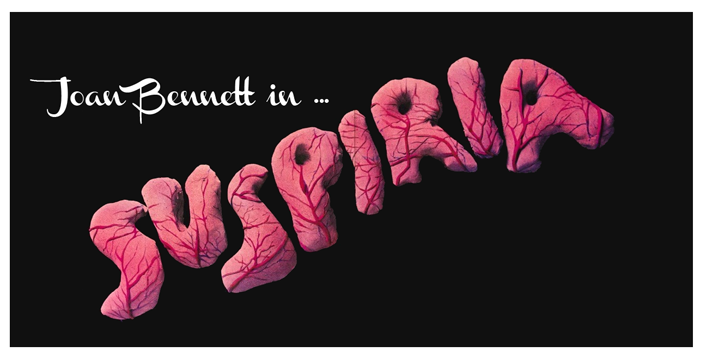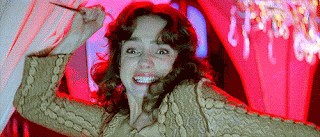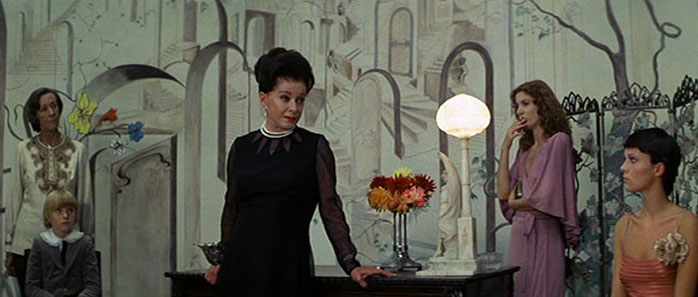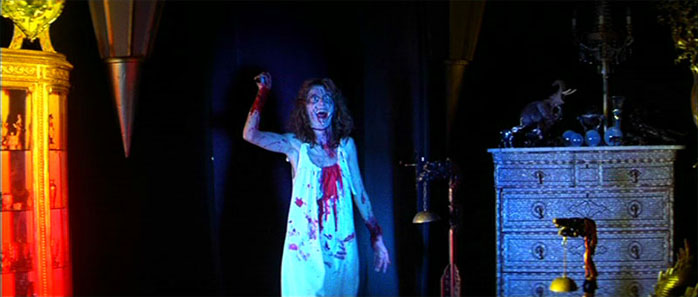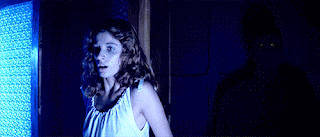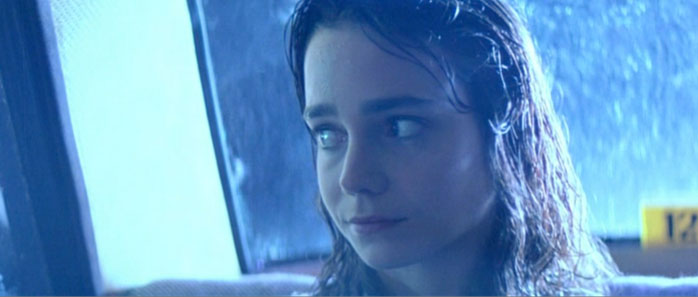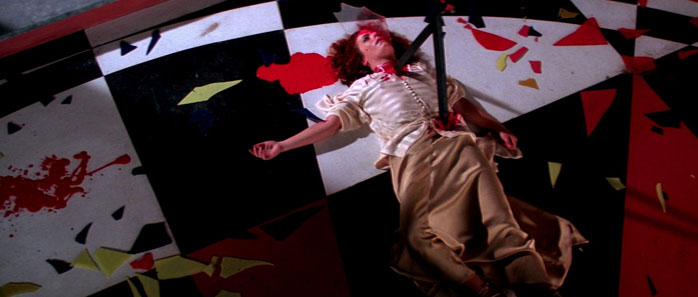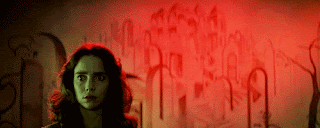SUSPIRIA isn't so much a movie as it is
cinematic alchemy. There's
nothing about this movie that ought to work, from the lurching, deranged performances to the use of Technicolor film process to highlight the STAR TREK-like cinematography. The score sounds like the kind of stuff you'd find in the $1 bins of your local used record store*, the story makes no sense and the dialogue exists only because audiences have grown accustomed to hearing it since the release of
THE JAZZ SINGER.
If "magic" is the art of causing change to occur in conformity to human will, then director DARIO ARGENTO is a sorcerer to be reckoned with.
Because SUSPIRIA works, even when logic and reason tell you it shouldn't. The movie is a candy colored nightmare brought to life, a film so hypnotic that it's managed to stay vibrant and vital no matter how much audience tastes have changed over the years.
For much of its life, it was a movie that film fans could only
hear about. My first experience with the 1977 film came from the pages of Fangoria about a decade later in a feature story that did nothing but add to the movie's legend.
"Here's a great film you can't see," was the gist of the story, which was all the more galling because of the flood of miserable horror movies that were littering the shelves of video stores in those days.
The first time I saw the film, I was both impressed and disappointed. Nothing could live up to the years of ominous chatter about SUSPIRIA, and I was even a little saddened to have survived the experience with my mind intact. This was my generation's
THE KING IN YELLOW, after all. Was a little madness too much to expect from a work of cinematic genius?
I also realized that, for all the rabid fervor for which fans had praised the film, nobody had said much about its story. There's a reason for that: The story doesn't make sense. An American woman enrolls in a European ballet academy and comes to the slow realization that it's run by a bunch of witches. The end.
But story is hardly the point of SUSPIRIA. Like his American soulmate George Romero, Argento couldn't care
less about character development. Argento used to be such a deft filmmaker that traditional storytelling elements simply weren't necessary.
With SUSPIRIA, Argento takes audiences through such a tangled, wild path that it should have ended in disaster. Originally planned to be set in a dance school for children, Argento reportedly revised the concept in order to use older and more reliable actors. For reasons that are anybody's guess, he kept the script's original childish (and dumb) dialogue intact.
And that's just the beginning of the bizarre creative decisions on display in
SUSPIRIA. Characters are killed for no other reason that to populate the movie's running time with as much gore as possible. The coven behaves so insanely stupid that it's amazing it could have survived into the 20th century. In one scene, the witches use a demon to kill a student, while in another they provoke a seeing eye dog to kill its master. The movie is so front-loaded with action that little is left over for the movie's climax, which limps to a grinding, confusing halt.
And then there's film's title, which doesn't mean a goddamn thing.
And none of this matters. I'm not sure anybody's even been able to adequately explain why the movie works, but the film's got a stunning 95 percent at Rotten Tomatoes and is universally beloved by critics. It's a wet, stormy fever dream that has survived the years better than more pretentious counterparts like
ERASERHEAD and
CARNIVAL OF SOULS.
It's difficult to evaluate the movie's cast because of their incongruent presentation. Many of the actors are dubbed regardless of what language they're speaking, while JOAN BENNETT, who is clearly American, is given dialogue that
suggests she's not. Early in the film she tells newly arrived JESSICA HARPER that lodging in town will cost "50 of your American dollars," a line delivered with her upper class East Coast accent.
Cult icon
UDO KIER makes a quick appearance, but is not only dubbed by another actor, but photographed in such a way as to mask his good looks. It's a role that could have been played by
anybody, and don't be surprised if you forget he's even in the movie. Meanwhile, Harper's role is so vapidly written that it took a decent actress to do
anything with it. While her performance didn't win any awards, Harper's inherent charm keeps focused on her character. The script certainly didn't give a shit about her. (Note:
SUSPIRIA is Harper's second stop in her trifecta of cult classics, landing between 1974's
PHANTOM OF THE PARADISE and 1981's
SHOCK TREATMENT. In recent years she's written a number of children's books. If there's a canonization process of cult icons, it's high time Harper made the list.)
And then there's JOAN BENNETT. By 1977, the
woman who was almost Scarlet O'Hara found herself delivering amazingly absurd dialogue in an Italian
giallo film. Her career progression didn't happen all at once, to be sure. You don't go from being Fritz Lang's favorite leading lady to taking a supporting role in a movie like SUSPIRIA in a single bound. A combination of age and
scandal (as well as
a very public feud with HEDDA HOPPER) closed a lot of doors for her as the '60s began. Her appearance in HOUSE OF DARK SHADOWS, a film that might accurately be called an "American giallo," probably made her decision to appear in SUSPIRIA less difficult.
None of this is to suggest that Bennett should have been ashamed or embarrassed by her appearance in
SUSPIRIA. But, the 1970s introduced a new world of cinema, most of which probably looked alien to her, if not utterly offensive. I've never read any interviews with Bennett where she discussed this movie, and I wouldn't be surprised to hear she'd never seen it. Her role in the 1945 film
SCARLET STREET was shocking for its time (and led to at least
one city banning it) but that film is tame when compared to the blood that splattered across the screen in SUSPIRIA.
If you've never seen the movie, you might want to tread carefully. I'm no expert on audio/video presentation, but there are a number of wildly different versions of the movie out there. Some look and sound better than others. Here's one opinion on the subject.
(*Within context of the film, I actually quite like Goblin's score. Hopefully, this little note will spare me some angry e-mails.)

